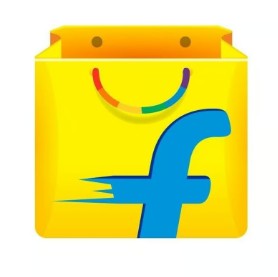Telegram has emerged as one of the most popular messaging apps in the world, known for its emphasis on privacy, security, and cutting-edge features. Since its launch in 2013, Telegram has carved a niche for itself among users seeking an alternative to mainstream apps like WhatsApp and Signal. With its open-source ethos, robust encryption, and innovative functionalities, Telegram has become a go-to platform for individuals, businesses, and even activists. This article explores Telegram’s history, features, global impact, controversies, and future potential as of May 2025.
The Origins of Telegram
Telegram was founded by brothers Nikolai and Pavel Durov, Russian entrepreneurs with a background in tech and a passion for privacy. Pavel Durov, often called the “Mark Zuckerberg of Russia,” previously founded VKontakte (VK), Russia’s largest social network, but left the company in 2014 amid pressure from the Russian government to share user data. This experience shaped the Durovs’ vision for Telegram—a platform prioritizing user privacy and independence from government interference.
Launched in August 2013, Telegram initially gained traction among tech enthusiasts for its speed and security. Built on the MTProto protocol, a proprietary encryption system, Telegram promised faster message delivery and better privacy than competitors. By 2014, it had amassed 35 million users, a number that skyrocketed over the years, reaching over 900 million monthly active users by early 2025, according to Telegram’s official updates.
Telegram operates as a non-profit organization, funded initially by the Durov brothers’ personal wealth and later through premium subscriptions and cryptocurrency ventures. Unlike many tech giants, Telegram has avoided traditional monetization methods like ads, focusing instead on user experience and privacy.
Key Features of Telegram
Telegram’s appeal lies in its rich feature set, which combines security with functionality and flexibility. Here are some of its standout features as of 2025:
- Security and Privacy:
- Secret Chats: Telegram offers “Secret Chats” with end-to-end encryption, self-destructing messages, and screenshot protection. Unlike regular chats, which are stored on Telegram’s cloud, Secret Chats are device-specific and not backed up.
- Cloud-Based Storage: Regular chats are encrypted but stored on Telegram’s servers, allowing seamless access across devices. This has sparked debates about security, as end-to-end encryption isn’t the default for all chats.
- No Phone Number Requirement: Users can sign up with usernames, reducing the need to share personal phone numbers.
- Speed and Efficiency:
- Telegram’s distributed server network ensures lightning-fast message delivery, even on slow connections. Its lightweight design makes it ideal for users in regions with limited internet access.
- Large Group Chats and Channels:
- Telegram supports groups with up to 200,000 members, far surpassing competitors like WhatsApp (1,024 members). This makes it a favorite for communities, businesses, and fan bases.
- Channels allow one-way broadcasting to unlimited subscribers, used by media outlets, influencers, and organizations for announcements or content sharing.
- Bots and Automation:
- Telegram’s Bot API allows developers to create bots for tasks like customer service, gaming, polls, or automation.
- File Sharing:
- Users can share files up to 2 GB in size (4 GB for Premium users), including documents, videos, and music, making Telegram a popular tool for sharing large media files.
- Customization:
- Telegram offers extensive customization, including themes, chat backgrounds, and animated stickers. Users can create their own sticker packs or use third-party ones.
- Cross-Platform and Multi-Device Support:
- Available on Android, iOS, Windows, macOS, Linux, and even as a web app, Telegram syncs seamlessly across devices without requiring a primary phone to be online.
- Voice and Video Calls:
- Telegram introduced voice calls in 2017 and video calls in 2020. By 2025, it supports group video calls with up to 1,000 participants, catering to webinars, classes, and large meetings.
- Telegram Premium:
- Launched in 2022, Telegram Premium offers perks like faster downloads, exclusive stickers, ad-free browsing, and increased file size limits for a subscription fee (pricing varies by region).
- Blockchain and Crypto Integration:
- Telegram’s TON (The Open Network) blockchain project, though initially abandoned in 2020 due to SEC regulations, was revived by the community. By 2025, Telegram integrates TON for in-app payments and decentralized apps, positioning it as a leader in crypto-friendly platforms.
- Stories:
- Introduced in 2023, Telegram Stories allow users to share ephemeral content, similar to Instagram or WhatsApp Status, with options for privacy controls and expiration timers.
These features make Telegram a versatile platform, catering to both casual users and power users like developers, businesses, and activists.
Global Reach and Impact
Telegram’s user base spans the globe, with significant popularity in regions like India, Russia, Iran, Brazil, and parts of Europe and Africa. Its growth has been fueled by several factors:
Social and Political Impact
Telegram has become a haven for activists, journalists, and dissidents in countries with censorship or surveillance. During the 2019 Hong Kong protests, the 2020 Belarus elections, and the 2022 Iran protests, Telegram was widely used to organize movements and share uncensored information. Its ability to host large groups and channels has made it a powerful tool for grassroots organizing.
However, this same functionality has made Telegram a platform for controversial content. Extremist groups, misinformation campaigns, and illegal marketplaces have also used Telegram, leading to criticism and calls for regulation.
Economic Impact
Telegram has empowered small businesses and creators through its channels and bots. For example, e-commerce sellers in India use Telegram channels to showcase products, while educators host classes via group video calls. The Bot API has also fostered a developer ecosystem, with thousands of bots enhancing productivity and entertainment.
Cultural Influence
Telegram’s sticker culture and meme communities have created a unique digital subculture. Public channels like “Telegram Tips” or “StickerHub” have millions of subscribers, showcasing the app’s role in shaping online trends.
Privacy and Controversies
Telegram’s privacy-first approach has been both a strength and a source of contention:
- Encryption Debate: Unlike WhatsApp, Telegram doesn’t enable end-to-end encryption by default. Regular chats are encrypted on the server but accessible to Telegram if legally compelled. Critics argue this compromises privacy, while Telegram defends its cloud-based model for usability.
- Misinformation and Illegal Activity: Telegram’s lax moderation has made it a hub for misinformation, piracy, and extremist content. In 2021, it was criticized for hosting anti-vaccine groups during the COVID-19 pandemic. By 2025, Telegram has implemented AI-based moderation and user reporting tools, but challenges persist.
- Government Pressure: Telegram has faced bans or restrictions in countries like Russia (2018-2020), Iran, and China due to its refusal to share user data. In 2024, France briefly detained Pavel Durov over concerns about Telegram’s role in facilitating illegal activities, though he was released without charges.
- Data Storage: Based in Dubai since 2017, Telegram claims it doesn’t store user data in jurisdictions with invasive surveillance laws. However, its opaque ownership structure and lack of transparency about data practices have raised questions.
Telegram vs. Competitors
Telegram often draws comparisons with WhatsApp and Signal:
- Vs. WhatsApp: Telegram offers larger groups, better file sharing, and more customization, but lacks default end-to-end encryption for all chats. WhatsApp, with 3 billion users, dominates in market share but has faced privacy backlash due to its Meta ownership.
- Vs. Signal: Signal is the gold standard for privacy, with end-to-end encryption for all communications. However, Telegram’s feature set, speed, and group capabilities make it more versatile for non-privacy-focused users.
The Future of Telegram
As of May 2025, Telegram is poised for further growth and innovation:
- Deeper Crypto Integration: With TON’s revival, Telegram aims to expand in-app payments, NFTs, and decentralized apps, potentially rivaling platforms like WeChat in the super-app space.
- AI and Automation: Telegram may leverage AI for smarter bots, content moderation, and personalized features like predictive typing or automated translations.
- Augmented Reality (AR): Following industry trends, Telegram could introduce AR features for video calls or stickers, enhancing user engagement.
- Privacy Enhancements: To address criticism, Telegram might introduce optional end-to-end encryption for all chats or decentralized storage options.
- Regulatory Challenges: As governments push for backdoors or moderation, Telegram’s commitment to privacy will be tested. Its non-profit status and distributed team may help it navigate these challenges.
- Interoperability: Like WhatsApp, Telegram may face pressure to interoperate with other apps under regulations like the EU’s Digital Markets Act, potentially allowing cross-platform messaging.
Conclusion
Telegram’s journey from a niche privacy app to a global powerhouse reflects its ability to balance innovation with user autonomy. Its speed, versatility, and developer-friendly ecosystem have made it a favorite for diverse audiences, from activists to entrepreneurs. However, challenges like misinformation, regulatory scrutiny, and privacy concerns remain hurdles to its long-term success.
As Telegram approaches its billionth user, its future will depend on how it navigates the delicate balance between freedom and responsibility. In a digital age where privacy is increasingly rare, Telegram stands as a bold experiment—one that continues to redefine how we connect, share, and communicate.















Leave a Reply